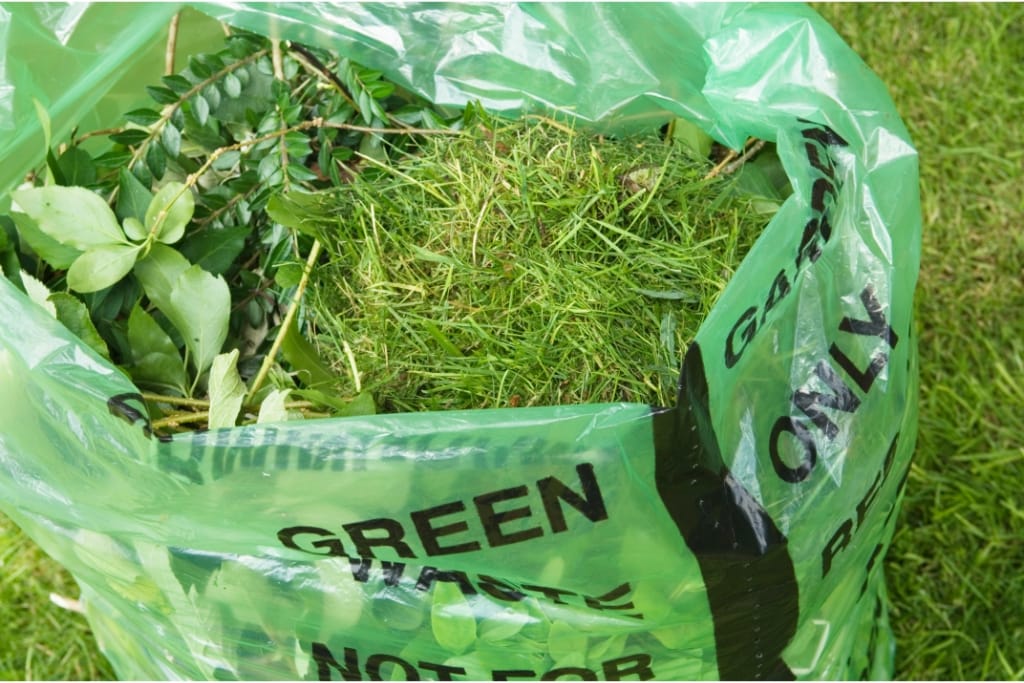Maintaining a lush, green lawn often results in a significant amount of organic waste.
Instead of sending this plant material to the landfill, why not transform it into valuable resources for your garden?
Recycling lawn waste not only helps the environment but also enhances the fertility and health of your garden soil.
Discover how you can make the most of your lawn clippings and leaves with these eco-friendly recycling methods and take a step towards a more sustainable lifestyle.
Explore the following ideas to turn your grass waste into green gold for your backyard oasis.
1)) Composting Grass Clippings
Composting grass clippings is a simple yet effective way to recycle your lawn waste.
As these clippings decompose, they break down into rich, nutrient-filled organic matter that can be used to improve the soil.
To start, collect the clippings in a pile or bin, ensuring they are somewhat dry to prevent matting.
You can mix them with other carbon-rich materials like dried leaves or shredded paper to aid the decomposition process.
Turning the compost pile regularly provides aeration, speeding up the breakdown.
Properly composted grass clippings can serve as a nutritious mulch or soil conditioner for your garden beds.
Embrace this sustainable practice and transform your lawn maintenance routine into an eco-friendly endeavor.
2)) Mulching Leaves For Fertilizer
Mulching leaves is another excellent method to recycle your lawn waste while enriching your garden soil.
Rather than raking and bagging leaves, simply run a lawn mower over them to shred them into tiny pieces.
This leafy mulch can then be spread directly over your garden beds or around trees and shrubs, providing a protective layer.
As the leaves break down naturally, they release essential nutrients back into the soil, improving its structure and fertility.
The mulching process also helps retain soil moisture and suppress weed growth, creating a healthier growing environment for your plants.
By adopting leaf mulching, you turn autumn's bounty into a natural, cost-effective fertilizer for your garden, enhancing its vitality without the need for chemical additives.
3)) Creating A Flower Bed With Excess Soil
Transforming excess soil into a vibrant flower bed is another creative way to recycle lawn waste while beautifying your garden.
Instead of discarding the surplus soil from landscaping or plant re-potting projects, designate an area in your yard for a flower bed.
Begin by layering the excess soil to create an elevated bed that offers better drainage and improved root growth for your plants.
Incorporate compost or organic matter to enhance soil fertility and structure, providing an ideal growing medium.
Select a variety of native flowers or those adapted to your local climate, ensuring robust growth and minimal maintenance.
This approach not only saves resources but also adds aesthetic appeal to your outdoor space.
By converting excess soil into a flourishing flower bed, you repurpose waste and contribute to a greener environment.
4)) Crafting Natural Pathways With Branches
Creating natural pathways with branches is an imaginative approach to recycling lawn waste while adding rustic charm to your landscape.
Start by gathering fallen branches and pruning cuttings from your yard, selecting those that are sturdy yet easy to handle.
Lay these branches along desired pathways, arranging them to form a defined and stable walking surface.
You can intertwine smaller branches to create a woven texture, enhancing the visual appeal.
This eco-friendly pathway naturally blends with outdoor spaces and provides gentle guidance throughout your garden.
Over time, as branches decompose, they enrich the soil, making your garden even more sustainable.
By repurposing branches as natural pathways, you add character to your garden while reducing waste in an environmentally conscious manner.
5)) Making DIY Garden Decorations From Twigs
Crafting DIY garden decorations from twigs is a creative way to recycle yard waste while personalizing your outdoor space.
Begin by collecting twigs of various sizes and shapes from your garden or neighborhood.
These natural elements can be transformed into a variety of decorative items such as wreaths, garden art, or trellises.
Twigs can be combined with other recycled materials like stones or shells to create unique designs, fostering creativity and resourcefulness.
As you construct your decorations, consider incorporating wire or twine to secure the structures while maintaining a rustic aesthetic.
This approach not only helps reduce waste but also results in original, charming decor that enhances your garden's visual appeal.
By using twigs to create DIY decorations, you bring an element of natural beauty to your landscape while embracing sustainable gardening practices.
Conclusion
Embracing these sustainable garden practices allows you to transform common lawn waste into valuable resources that benefit your garden and the environment.
By recycling materials such as grass clippings, leaves, soil, branches, and twigs, you not only reduce landfill waste but also create nutrient-rich soil amendments and artistic enhancements for your outdoor space.
These eco-friendly methods foster biodiversity, improve soil health, and offer creative outlets that enhance the beauty and functionality of your garden.
Adopting such practices contributes to a healthier planet and inspires a more sustainable lifestyle, encouraging others to view gardening as a vital part of environmental stewardship.
Download Our Free E-book!







